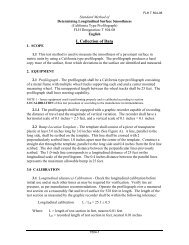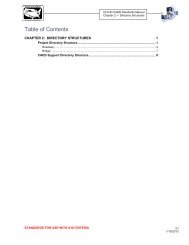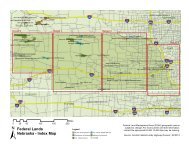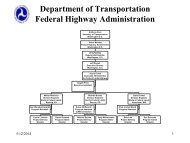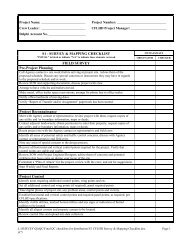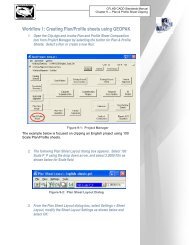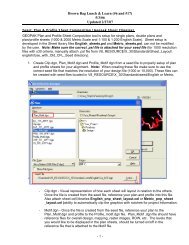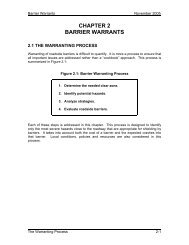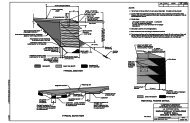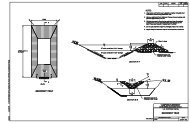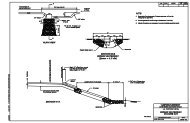CFL Guidelines for Developing Critical Path Method Schedules ...
CFL Guidelines for Developing Critical Path Method Schedules ...
CFL Guidelines for Developing Critical Path Method Schedules ...
- No tags were found...
You also want an ePaper? Increase the reach of your titles
YUMPU automatically turns print PDFs into web optimized ePapers that Google loves.
<strong>CFL</strong> <strong>Guidelines</strong> <strong>for</strong> <strong>Developing</strong> October 2006<strong>Critical</strong> <strong>Path</strong> <strong>Method</strong> <strong>Schedules</strong> (CPMs)5.4 Terms and DefinitionsActivity: Per<strong>for</strong>mance of a specific task having a duration.Bar Chart (Gantt Chart): A schedule <strong>for</strong>mat (type) showing activities, sequencing, durations, taskinterrelationships and start & finish dates.Calendar: The scheduling mechanism that determines working time <strong>for</strong> resources and tasks.Concurrent Activities: Activities which occur at the same time.Constraint: Limitations placed on an activity, usually a "must start" or "must finish" date.CPM: <strong>Critical</strong> <strong>Path</strong> <strong>Method</strong> predicts project duration by analyzing with sequence of activities.<strong>Critical</strong> <strong>Path</strong>: The series of tasks that must be completed on schedule <strong>for</strong> a project to finish on schedule.Or, the longest path <strong>for</strong> the earliest completion having zero (or least) float.Duration: Time to complete an activity.Early Start (ES)/Early Finish (EF): The earliest an activity can start or finish on the schedule.Event: A zero-duration activity.Finish-to-Finish (FF): Relationship between activities where the finish of the first activity is tied to thefinish of the second activity.Finish-to-Start (FS): Relationship between activities where the start of the first activity is tied to thefinish of the second activity. (Most common).Float: The amount of time between the early start and late start of an activity or group of activities.Free Float (FF): The amount of time an activity can be delayed be<strong>for</strong>e it impacts the next activity.Lag: Time offset between activities.Late Start (LS)/Late Finish (FS): The latest an activity can start or finish without delaying projectcompletion.Logic Loop: Sequence of activities with no end.Logic: The relationship or "link" between activities or groups of activities.Milestone: A reference point marking a major event in a project and used to monitor the project'sprogress. Any task with zero duration is automatically displayed as a milestone within Microsoft Project.Negative Float: Total float that is less than zero.Network: graphical model of the project which shows activities and interrelationships.Nonworking time: Hours or days designated in a resource or project calendar when Project should notschedule tasks because work is not done. Nonworking time can include lunch breaks, weekends, andholidays, <strong>for</strong> example.Predecessors: Activities that must precede any given activity.Pure Logic Diagram: A schedule <strong>for</strong>mat (type) showing tasks, sequencing and interrelationshipsbetween tasks.Start-to-Finish (SF): Relationship between activities where the start of the first activity is tied to thefinish of the second activity.Start-to-Start (SS): Relationship between activities where the start of the first activity is tied to the startof the second activity.Subtask: A task that is part of a summary task. The subtask in<strong>for</strong>mation is consolidated into the summarytask.Successors: Activities that must succeed any given activity.Task: An activity that has a beginning and an end.Time Logic Network Diagrams (CPM): A schedule <strong>for</strong>mat (type) showing activities, sequencing, timescaleddurations, and task interrelationships with lags, float and start & finish dates.Total Float (TF): The amount of time an event can be delayed without delaying project completion.- 26 -



